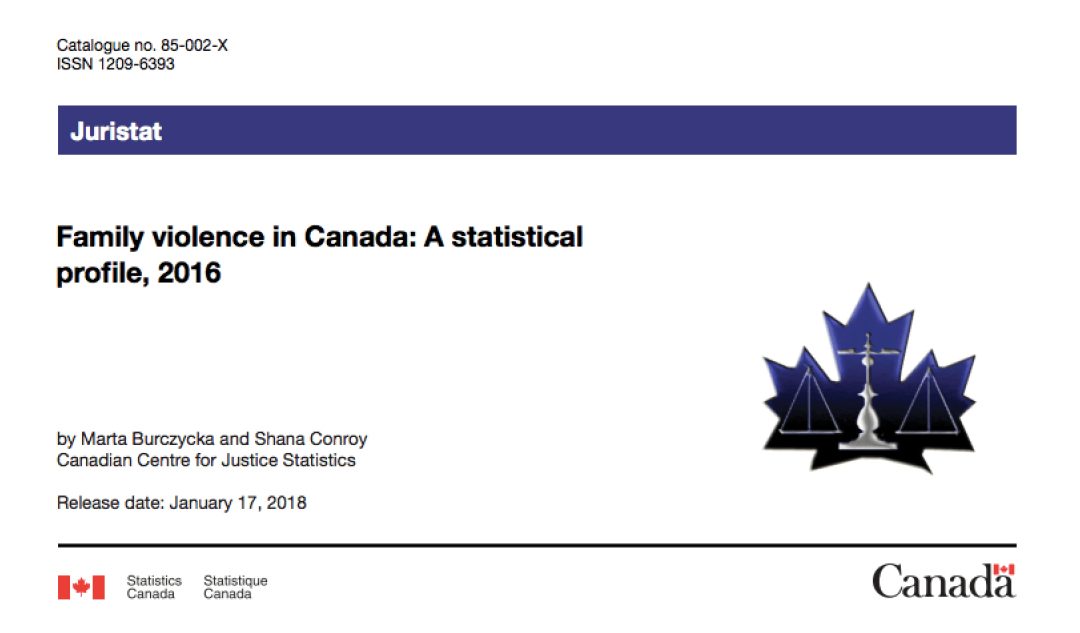Family violence in Canada: A statistical profile is an annual report produced by the Canadian Centre for Justice Statistics under the Federal Family Violence Initiative. Since 1998, this report has provided current data on the nature and extent of family violence in Canada, as well as analysis of trends over time. The information presented here is used extensively to monitor changes that inform policy makers and the public.
The 2016 edition of the report features an in-depth analysis of self-reported stalking in Canada, using data from the 2014 General Social Survey on Canadians’ Safety (Victimization). This featured section examines the nature and prevalence of self-reported stalking, including how stalking behaviour has changed over time. A particular focus on intimate partner stalking is also presented, including an overview of how stalking that occurs in the context of these relationships differs from other kinds of stalking in important ways. The featured section also provides a multivariate analysis of various risk factors that impact the odds of stalking victimization, both within and outside of intimate partner relationships.
As in past years, this year’s report also includes sections dedicated to police-reported data on family violence in general, intimate partner violence specifically, family violence against children and youth, and family violence against seniors. Presented in a fact sheet format accompanied by detailed data tables, these sections provide readers with key findings for 2016 from the Uniform Crime Reporting Survey and the Homicide Survey. For the first time in 2016, these sections also include an analysis of persons accused of family violence.
In this report, ‘family’ refers to relationships defined through blood, marriage, common-law partnership, foster care or adoption; ‘family violence’ refers to violent criminal offences where the perpetrator is a family member of the victim, as defined above.
Download the full 2016 report by clicking here.
(Source: http://www.statcan.gc.ca/pub/85-002-x/2018001/article/54893-eng.htm)


Recent Comments